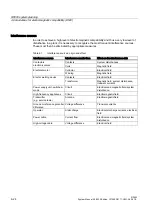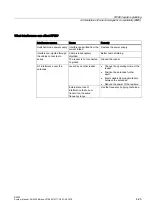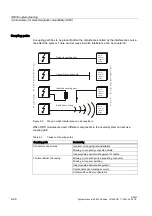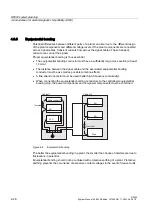
RF600 system planning
4.4 The response of electromagnetic waves in the UHF band
RF600
System Manual, 09/2005 Edition, J31069 D0171-U001-A0-7618,
4-13
4.4
The response of electromagnetic waves in the UHF band
4.4.1
The effect of reflections and interference
Reflections and interference
Electromagnetic waves in the UHF band behave and propagate in a similar manner to light
waves, that is they are reflected from large objects such as ceilings, floors, walls and
windows and interfere with each other. Due to the nature of electromagnetic waves,
interference can lead to wave amplification which can produce an increased reading range.
In the worst case, interference can also result in waves being extinguished which causes
holes in reader coverage.
Reflections can also be beneficial when they cause electromagnetic waves to be routed
around objects to a certain extent (deflection). This can increase the reading probability.
Due to these electromagnetic characteristics, it is extremely difficult in the multiple-reflection
environment that is usually found in the real environment on site, to determine propagation
paths and field strengths for a particular location.
Reducing the effect of reflections/interference on tag identification
•
Reducing the transmit power:
To reduce interference to a minimum, we recommend that the transmit power of the
reader is reduced until it is sufficient for an identification rate of 100 %
•
Increasing the number of antennas to 3 or 4:
More antennas in a suitable antenna configuration can prevent gap in reader coverage
















































